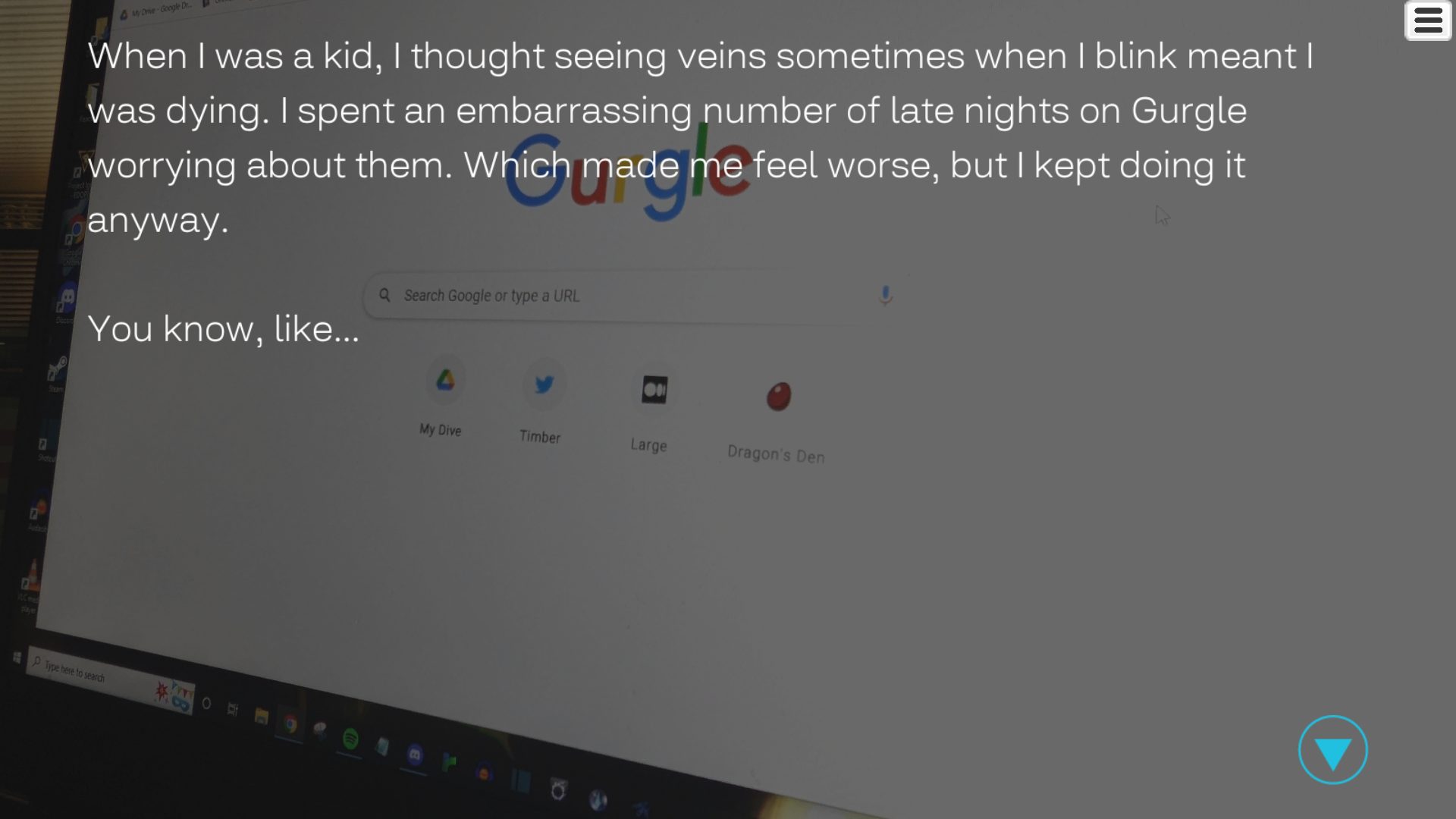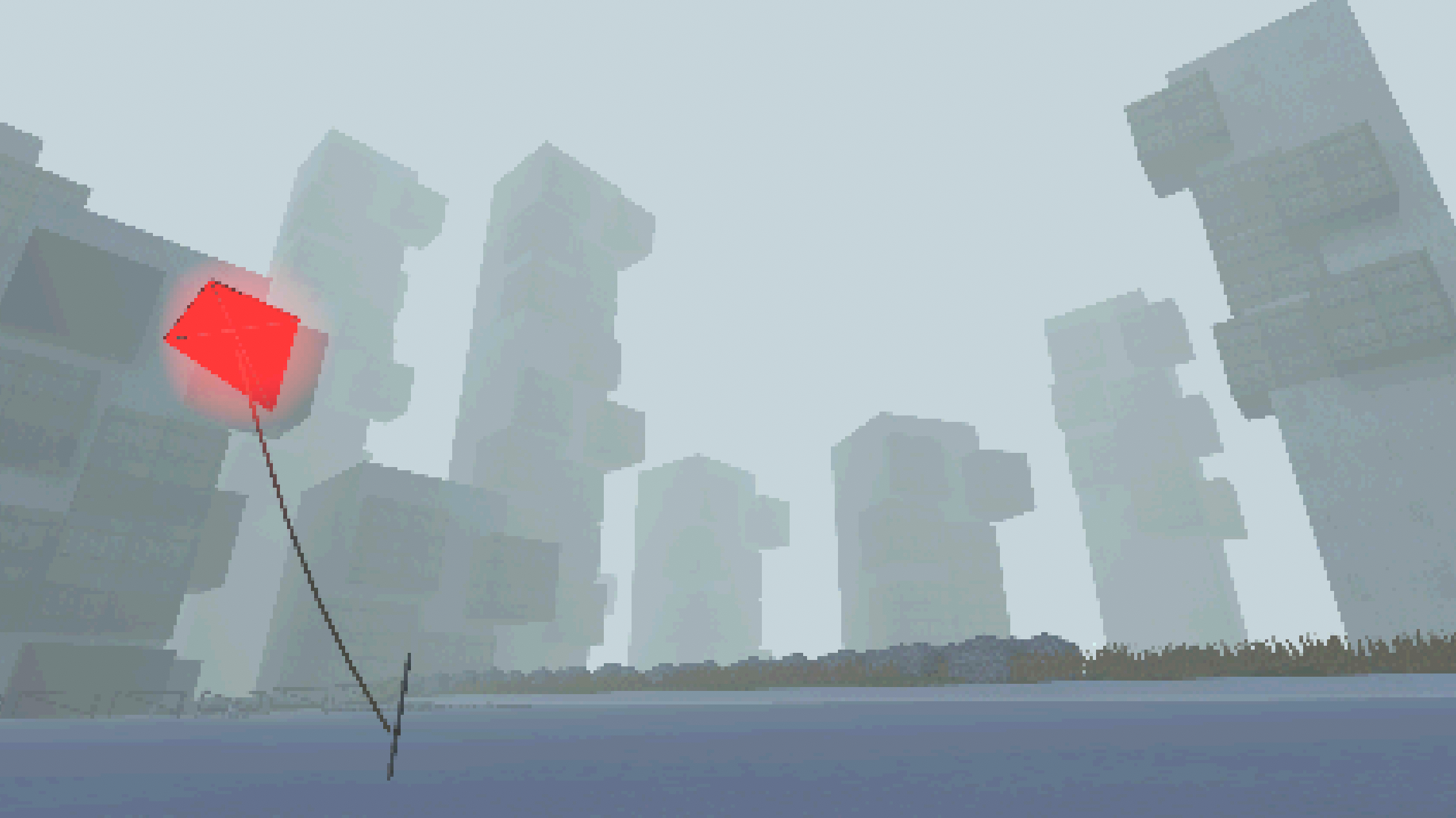
Words of Terror
The indie horror space is a great place to create and refine storytelling. Limitations of technology and budget put an extra emphasis on indie horror games to find workarounds from a technical standpoint, but the ones trying to tell a story have the power of words to potentially bolster them.
It doesn’t have to be Shakespeare, hell it doesn’t even have to be grammatically correct. Still, the right writing can push a samey-looking low-poly horror game into something uniquely scary, personal, or even absurdly funny. Digital Tchockes Go Fly a Kite may have had the hook of a bizarre low-res claymation world, but it stuck in my head for far longer than its 15-minute playtime because the satirical humor and despair in its writing was the standout feature.
Or how about Birthday Boy’s cosmic comedy horror Drive Time Radio? That game’s riff on radio contests takes a strange turn, and the writing, aided by some pitch-perfect DJ impressions, is quick-witted and maliciously silly. You’re supposed to be watching the increasingly hazardous road and answering questions, but the DJ’s silver-tongued banter is an exquisitely weaponized distraction.
The bounty of horror stories and entire mythologies written on the internet over the decades is a natural feeding ground for indie horror games to mine their stories from, twisting together the good parts and kneading them into their own freaky dough. Nowhere is that felt as strongly as in the visual novel genre and the resurgence of text adventures.
With minimal visual stimuli and in some cases not even a crumb of musical accompaniment, some modern horror text adventures can skirt dangerously close to being an ebook with a fancy theme. Yet there’s proof even in its most stripped-back form a horror game can breed atmosphere with words.

It doesn’t prevent these games from feeling distinct that’s for sure. I’ll present three different horror text adventures and what they bring to the table. Firstly, brokenportals’ Whimper sets the tone for its tale of a broken world in the aftermath of alien invasion and subsequent departure by using a selection of pictures of sickly-colored environments. Yet Its lengthy chunks of storytelling text do the lion’s share of the work though by painting a bleak picture of discovery by a lone survivor venturing out into the poisoned world for the first time. The way descriptions of the fouled Earth are structured really sells the post-apocalyptic wasteland. Slap a bit of mood music on in the background and it becomes a delightfully fresh experience.
Then we have hartsy’s Cut the Lights (still in development). A supernatural tale of Hollywood tragedy that spreads its roots into the same dark film soil as Half Mermaid’s stupendous Immortality. It’s inarguably the least showy of the three games I’m mentioning here, but the writing gets you on the hook with a vivid description of a fallen star and the tragic haunting that continues to needle them to this day. The neatest trick Cut the Lights plays is in its casual options for dialogue choice within its text. Nothing of great story consequence, but little moments to put the player in the right mindset to understand, and perhaps find some empathy for, the protagonist. It’s another game that goes heavy on the text before interaction occurs, but these little player-controlled shifts in the script help to keep things engaging. While the characters are fictional, there’s something deeply personal and telling about how this unnerving tale of Hollywood’s dark side plays out.
Last, but absolutely by no means least is The River Runs Through Us Part 1, a more aural kind of text adventure that comes closer to being a visual novel if anything (and the developer characterizes it as such to be fair). It’s what I would call the next step from what Whimper and Cut the Lights do. It provides visual and auditory sustenance, but it would be a fancy slideshow without the enriching story being told in written form. The River Runs Through Us mixes the personal haunting of 20-something college student Camlin and a long-gestating tragic history that surrounds the dilapidated mills and hiking trails of Western Massachusetts.

Camlin hears the sounds of a great flood from Western Massachusetts’ history via their audio equipment, the deafening roar of water incapacitating them. When Camlin begins to delve into that history further, they discover something dread-inducing and ominous.
The use of audio alongside the right image brings the words off the screen and formulates a clear scene in your mind. It may be a story about the ghosts of American folklore, but even in this first part, The River Runs Through Us has the somber, shuffling dread atmosphere of a J-Horror story without using that as a prop.
I must admit until the last year or so, visual novels and text adventures weren’t at the frontline of games I sought out, but in discovering more of them via itch.io I’ve grown very fond of them. I don’t know if I’d have ended up as infatuated with games such as Norco if I hadn’t seen what that game does so well in such distilled forms by small development teams first. My Horror gaming in 2023 will definitely be better thanks to this fresh adoration for the written word as a means to spread the virus of dread, despair, and scares.
You can check out DreadXP for more horror game reviews, editorials, and interviews.


